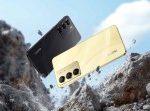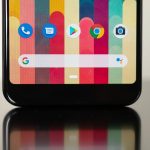
Researchers from the University of California, Santa Barbara have developed a new, cheaper method for possible home COVID-19 testing that involves a smartphone camera and app.
The new testing system, which is the subject of a research paper printed in the journal JAMA Network Open, uses some basic lab equipment and the app Bacticount to detect possible pathogens in a person’s saliva. To use it, you load your saliva sample into a test kit sitting on a hot plate. You then add in a specific reactive solution that amplifies viral RNA that might be in that spit, similar to the solution process that current at-home COVID tests use.
This specific process is called “Loop-mediated Isothermal Amplification,” or LAMP for short.

Credit: University of California, Santa Barbara
Once any potential viral RNA is amplified, you place a cardboard box with an LED light over the top. Then, a smartphone’s camera can look into the LED-lit box, where it should be able to see any color reactions that indicate the presence of COVID-19. If a viral load is present, the solution should create a bright red light. If the viral load is larger, aka more contagious, the red light should appear quicker. The app will estimate your viral load based on how quickly that light appears and registers.
According to Gizmodo, the cost of using this new test setup would be “less than $100, plus the price of the smartphone you’d need to run the app.” For each subsequent test, which would presumably require a new test kit, you’d be out about $7 – a bargain compared to the hundreds that insurance companies have been charging for certain PCR and rapid tests.
The researchers say this testing method could have the same accuracy rate as a PCR test, and being able to conduct the test at home could potentially allow for much quicker results than a PCR test taken at a doctor’s office that handles hundreds of samples a day. However, it is important to note that this study did have a relatively small sample size of 50 people, so further research will be needed before it can be implemented widely.
The test kit was originally designed for “resource-limited settings,” but its head researcher told Gizmodo that it could be easily adapted for home testing as well. The only caveat is that the Bacticount app is currently only compatible with the Samsung Galaxy S9 due to its specific camera calibrations. This could change in the future as research continues, and allow for more smartphone cameras to tap into the testing technology.
Powered by WPeMatico






